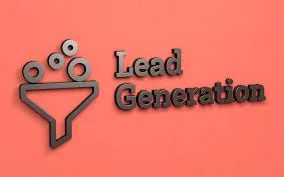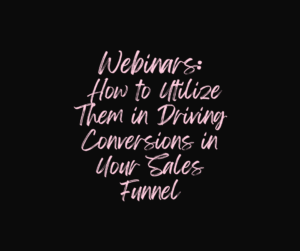The Importance of A/B Testing in Your Sales Funnel: Driving Optimizations and Conversions
A/B testing, also known as split testing, is a pivotal practice in the world of marketing and sales funnels. It involves comparing two versions of a webpage, email, or other marketing elements to determine which performs better. This systematic comparison helps in understanding user preferences, optimizing conversion rates, and enhancing overall funnel performance. In this guide, we’ll delve into the significance in sales funnels and how it contributes to driving optimizations and conversions.

Understanding A/B Testing in Sales Funnels
A/B testing involves creating two versions—A and B—of a particular element within the sales funnel, where one variable is changed while keeping the rest constant. These variations could include different headlines, CTAs, colors, layouts, or even entire landing pages. By directing traffic evenly to both versions and analyzing which performs better in achieving the desired outcome, businesses gain valuable insights into user behavior and preferences.
The Significance of A/B Testing in Sales Funnels
1. Data-Driven Decision Making:
A/B testing allows businesses to make informed decisions based on actual user responses rather than relying on assumptions or opinions. It provides concrete data on what works best for the audience.
2. Optimization and Improvement:
This facilitates iterative improvements to the sales funnel. By identifying and implementing changes that lead to better outcomes, businesses can steadily optimize their funnels for higher conversions.
3. Understanding User Behavior:
A/B testing helps in understanding how users interact with different elements. It sheds light on user preferences, guiding businesses to tailor their funnel elements accordingly.
4. Personalization and Targeting:
Through A/B testing, businesses can determine which variations resonate better with specific segments of their audience. This insight enables more effective personalization and targeting strategies.
5. Mitigating Risk:
Testing variations before full implementation minimizes the risk associated with making significant changes to the funnel. It allows for experimenting in a controlled environment.
Key Elements to A/B Testing in Sales Funnels
1. Landing Pages:
Test different headlines, images, CTAs, layouts, or forms to understand which combination drives better conversions.
2. Email Campaigns:
Experiment with subject lines, content layout, CTAs, or sending times to optimize open and click-through rates.
3. Product Descriptions or Offers:
Test variations in product descriptions, pricing strategies, or promotional offers to determine the most compelling option for customers.
4. Checkout Process:
Optimize the checkout flow by testing different steps, form lengths, or payment options to reduce abandonment rates.
5. Ad Campaigns:
Test ad copy, visuals, targeting options, or ad placement to maximize ROI and improve ad performance.
Best Practices for A/B Testing in Sales Funnels
1. Clearly Defined Goals:
Set specific and measurable goals for each A/B test. Determine what you want to achieve before starting the test.
2. Test One Variable at a Time:
Isolate and test one variable at a time to accurately determine the impact of changes and avoid confounding results.
3. Sufficient Sample Size:
Ensure your test receives enough traffic or data to yield statistically significant results. Insufficient sample sizes may lead to inconclusive or unreliable outcomes.
4. Monitor and Analyze Results of A/B Testing:
Regularly monitor the performance of A/B tests and analyze the results to draw actionable insights. Use statistical tools to validate the significance of differences.
5. Implement Iteratively:
Based on successful outcomes, implement the winning variation and continue testing to further refine and improve.
Tools for A/B Testing in Sales Funnels
Several tools and platforms to facilitate:
- Unbounce: Unbounce provides a platform for creating and testing custom landing pages. It offers A/B testing features to compare variations in design, copy, and CTAs to optimize landing page performance for higher conversions.
- Optimizely: Provides capabilities along with additional features for personalization and experimentation.
- VWO (Visual Website Optimizer): Enables this strategy, multivariate testing, and split URL testing for website optimization.
Conclusion
A/B testing is a foundational practice in optimizing sales funnels. By systematically comparing variations and analyzing user responses, businesses gain insights that drive informed decisions, continuous improvements, and higher conversion rates. Embracing it as an ongoing process empowers businesses to tailor their funnels to meet user expectations, resulting in enhanced user experiences and increased revenue.
Remember, successful A/B testing requires clear goals, meticulous analysis, and a commitment to iterative improvements. Utilizing the right tools and best practices, businesses can harness the power of it to unlock the full potential of their sales funnels.















